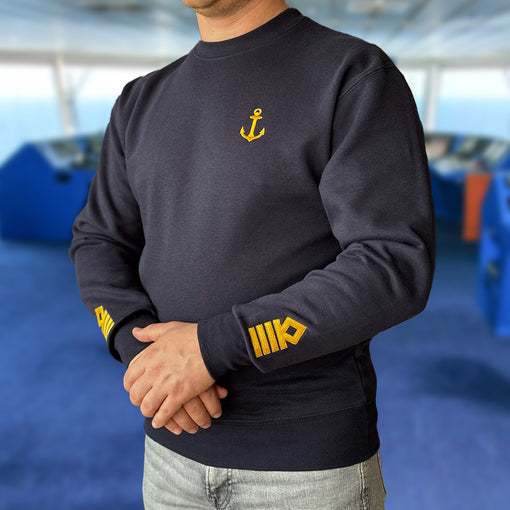
- Article published at:
- Article comments count: 0
Drawer menu
The Plimsoll Mark: A Seafarer's Guide to Ship Safety
Navigating the vast oceans and ensuring the safety of a ship and its crew is no small feat. For seafarers, understanding the intricacies of their vessel is paramount. One such crucial detail, often overlooked by the general public but of utmost importance to mariners, is the Plimsoll Mark. In this blog post, we'll dive deep into the significance of the Plimsoll Mark, its history, and why every seafarer should be well-acquainted with it.
What is the Plimsoll Mark?
The Plimsoll Mark, also known as the Plimsoll Line or Load Line, is a reference mark located on a ship's hull. It indicates the maximum depth to which a vessel can be safely loaded, depending on the water's density in which it's sailing. The mark ensures that the ship does not become overloaded, which could compromise its safety.
History of the Plimsoll Mark
The Plimsoll Mark owes its name to Samuel Plimsoll, a 19th-century British politician and social reformer. Disturbed by the increasing number of shipwrecks and loss of life due to overloaded ships, Plimsoll championed the cause for a regulation that would prevent overloading. His efforts culminated in the Merchant Shipping Act of 1876, which made the Plimsoll Line a mandatory inclusion on all British ships.
Understanding the Plimsoll Mark Symbols
Seafarers will notice various symbols and letters around the Plimsoll Mark. These denote the different load lines for various sea conditions and types of cargo:
- **TF** – Tropical Fresh Water
- **F** – Fresh Water
- **T** – Tropical Seawater
- **S** – Summer Temperate Seawater
- **W** – Winter Temperate Seawater
- **WNA** – Winter North Atlantic
The different lines account for the varying densities of water. For instance, saltwater is denser than freshwater, allowing ships to sit higher in the former. Similarly, water density changes with temperature, which is why there are different marks for tropical and temperate conditions.
Why is the Plimsoll Mark Essential for Seafarers?
1. Safety First: Overloading a ship can make it unstable, increasing the risk of capsizing. The Plimsoll Mark serves as a visual guide to ensure that ships are loaded safely.
2. Regulatory Compliance: Many countries have regulations in place that mandate adherence to the Plimsoll Mark. Non-compliance can lead to hefty fines and penalties.
3. Optimal Performance: Loading a ship correctly ensures optimal fuel efficiency and performance at sea.
4. nsurance Implications: Overloading might void a ship's insurance. In the event of an accident, if the ship is found to have been overloaded, insurance claims could be denied.
Conclusion
For seafarers, the Plimsoll Mark is more than just a line on a ship's hull. It's a testament to the maritime industry's commitment to safety and a constant reminder of the importance of responsible ship operation. By understanding and respecting the Plimsoll Mark, seafarers not only ensure their safety but also contribute to a more efficient and sustainable maritime industry.
If you found this article helpful, please share it with fellow seafarers and maritime enthusiasts. Safe sailing!